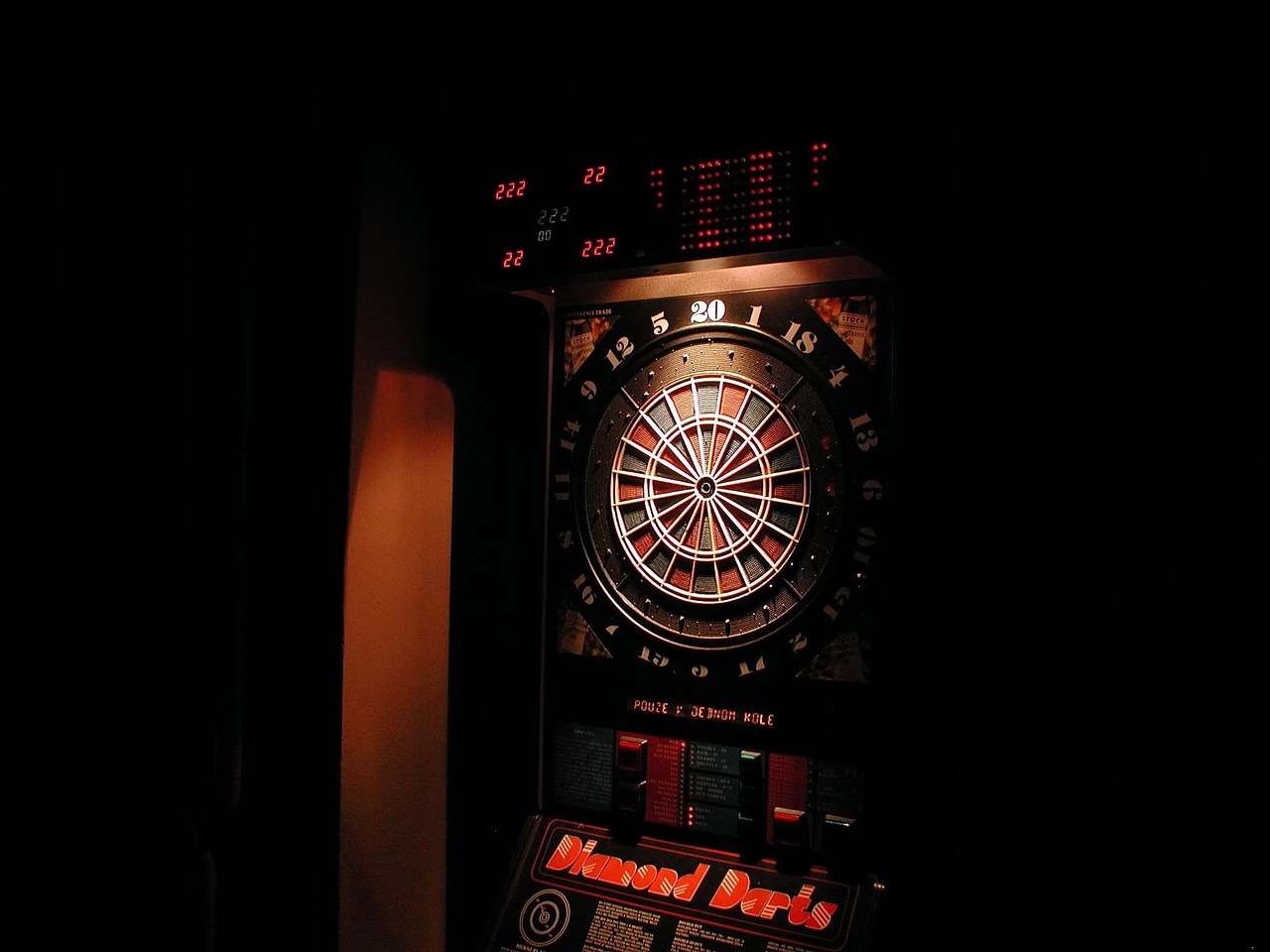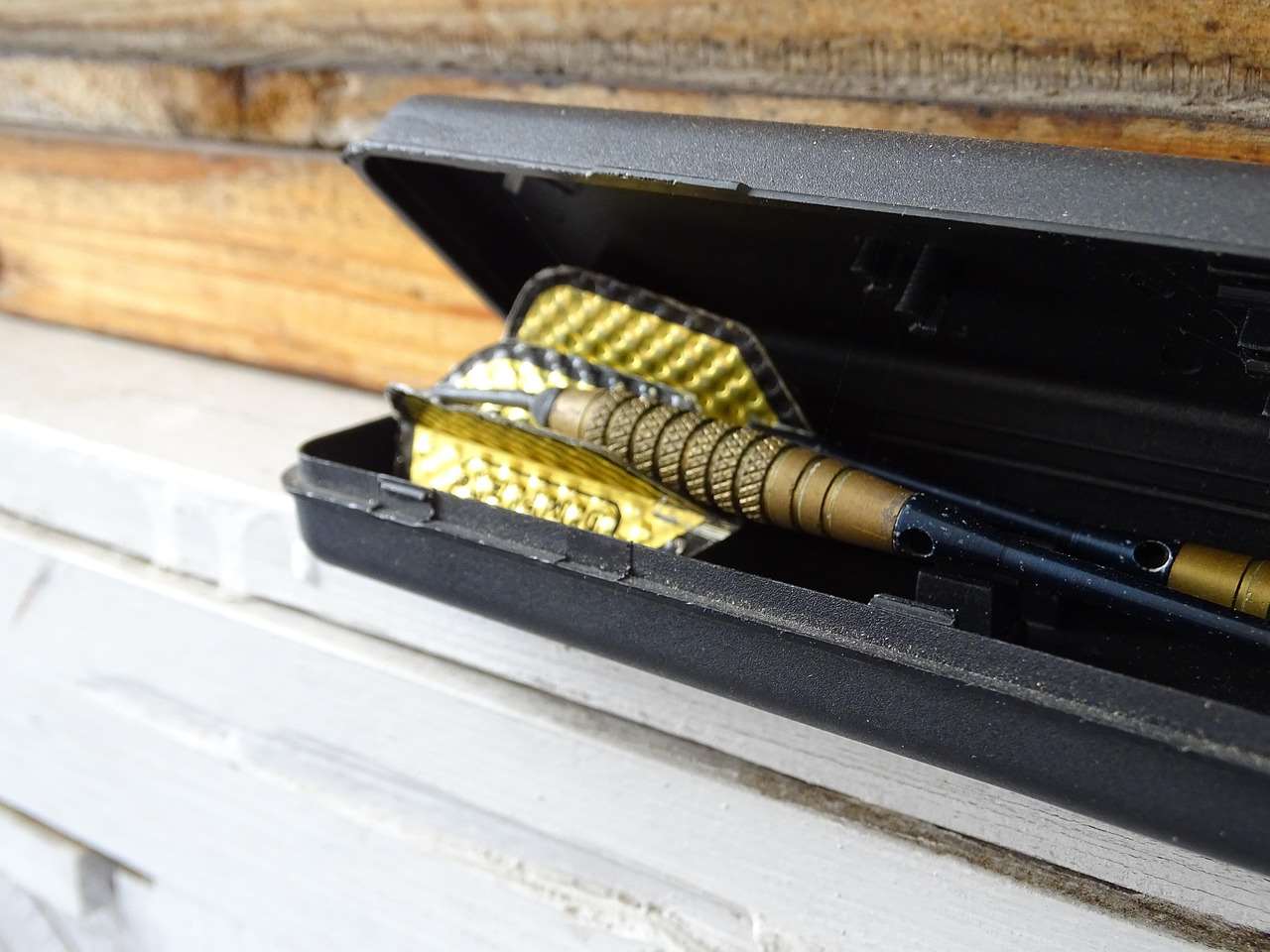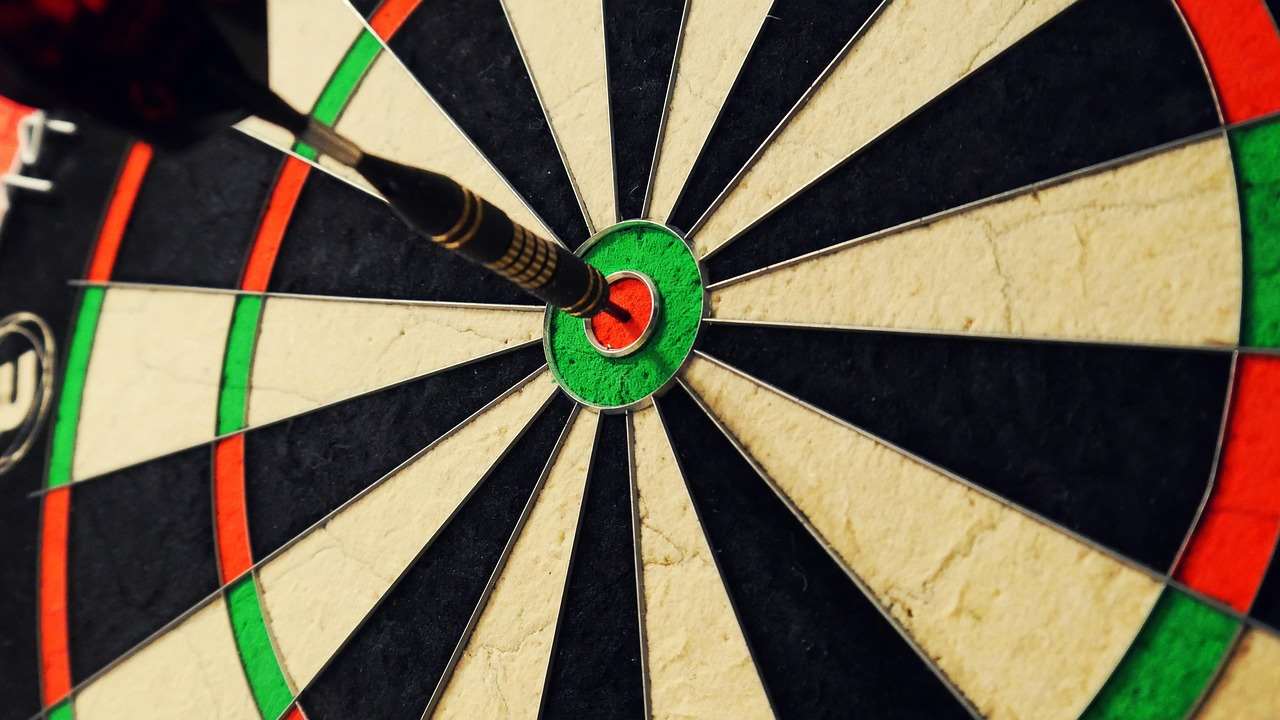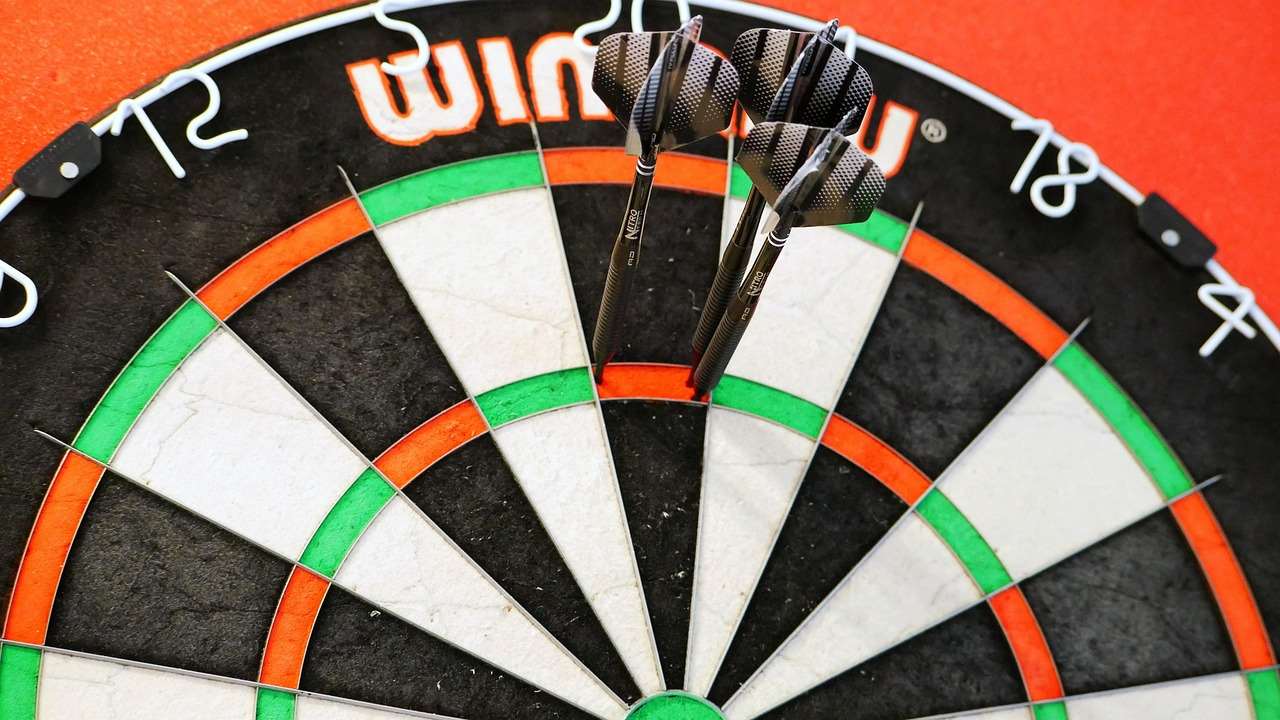Thinking about punching a dart board in frustration? While it might seem like a stress reliever, it’s a recipe for damaged equipment and potential injury. This article explores healthier ways to manage your dart game frustrations, covering alternative stress outlets, dartboard maintenance, and tips for improving your game to avoid those rage-inducing moments. You’ll also learn about different dartboard types and how to choose the best one for your needs.
⚠️ Still Using Pen & Paper (or a Chalkboard)?! ⚠️
Step into the future! The Dart Counter App handles all the scoring, suggests checkouts, and tracks your stats automatically. It's easier than you think!
Try the Smart Dart Counter App FREE!Ready for an upgrade? Click above!
Why You Shouldn’t Be Punching a Dart Board
The urge to react physically to a frustrating situation is understandable, but punching a dart board is never the answer. Dartboards, especially those made of sisal fiber, are designed to absorb the impact of relatively small, pointed darts. A fist, however, distributes a much larger force over a wider area. This can lead to several problems:
- Damage to the dartboard: You can crush the sisal fibers, creating dead spots and making it harder for darts to stick.
- Damage to your hand: Hitting a hard surface like a dartboard can result in bruises, sprains, or even fractures.
- Damage to your reputation: Losing your cool and resorting to violence, even against an inanimate object, isn’t a good look, especially in a social setting.
Instead of taking your anger out on the board, consider exploring alternative strategies for managing frustration. We’ll delve into those later, along with ways to prevent the need for such measures in the first place.

Healthy Alternatives to Punching a Dart Board
Feeling the heat of frustration rising during a darts game is common. The key is to redirect that energy into something productive or harmless. Here are some alternatives to punching a dart board:
- Take a break: Step away from the game for a few minutes. Get some fresh air, grab a drink, or just clear your head.
- Practice mindfulness: Focus on your breathing and try to calm your thoughts. Even a few minutes of meditation can make a difference.
- Vent to a friend: Talk to someone about what’s bothering you. Sometimes, just expressing your feelings can help release tension.
- Engage in physical activity: Exercise is a great way to relieve stress. Go for a walk, do some push-ups, or hit a punching bag (a better choice than the dartboard!).
- Reframe your thinking: Instead of focusing on the missed shots, try to see them as learning opportunities. Analyze what went wrong and think about how you can improve next time.
Remember, darts is a game. It’s meant to be enjoyable. If you’re not having fun, it’s time to take a step back and reassess.
One of the most effective ways to manage frustration is through preparation. Understanding your equipment, practicing regularly, and setting realistic expectations can significantly reduce the likelihood of tilting.
Understanding Your Dartboard: A Guide
Choosing the right dartboard is crucial for both enjoyment and longevity. There are several types available, each with its own pros and cons:
- Sisal Fiber Dartboards: These are the most common and preferred type for serious players. Sisal fibers are tightly packed together, creating a self-healing surface that lasts longer than other materials. A high-quality sisal dartboard will provide a consistent playing experience.
- Electronic Dartboards: Ideal for casual play and beginners, electronic dartboards automatically score the game and often feature various game modes. However, they tend to be less durable than sisal boards and can be prone to malfunctions. Consider darts video game ps4 as an alternative.
- Paper Dartboards: These are the cheapest option but also the least durable. They are suitable for occasional use but won’t withstand frequent play.
When selecting a sisal dartboard, look for features like a staple-free bullseye (to reduce bounce-outs), a rotating number ring (to distribute wear), and high-quality sisal fibers. Regular maintenance, such as rotating the board and removing loose fibers, can extend its lifespan and prevent the temptation of punching a dart board.

Proper Dartboard Setup
Setting up your dartboard correctly is essential for fair play and preventing damage. The standard height for the bullseye is 5 feet 8 inches (1.73 meters) from the floor. The throwing distance, measured from the face of the dartboard to the oche (the throwing line), is 7 feet 9 1/4 inches (2.37 meters) for steel-tip darts. For soft-tip darts, the distance is slightly longer.
Ensure the board is securely mounted to a wall or backing board to prevent it from wobbling or falling. A wobbly board can lead to inaccurate throws and increased frustration. Use a level to ensure the board is perfectly vertical. Correct setup is key to avoid the urge of target darts to buy.
Dart Throwing Technique: Improving Your Game
Improving your dart throwing technique can significantly reduce frustration by leading to more consistent scores. Here are some key elements to focus on:
- Stance: Find a comfortable and stable stance. Most players stand with one foot forward, angled slightly towards the dartboard.
- Grip: Experiment with different grips to find one that feels natural and allows for consistent release. Avoid gripping the dart too tightly.
- Arm Movement: Use a smooth and controlled arm movement, keeping your elbow relatively still. Avoid jerky or rushed throws.
- Follow-Through: Follow through with your arm after releasing the dart, pointing towards the target. This helps maintain accuracy.
- Consistency: Practice consistently to develop muscle memory and improve your overall technique.
Consider using a practice darts app with scoring to track your progress and identify areas for improvement (like Practice darts app with scoring). Regular practice, even for short periods, can make a big difference in your game and reduce the urge for rash actions like punching a dart board.
Common Dart Throwing Mistakes
Being aware of common mistakes can help you avoid them and improve your accuracy. Here are a few to watch out for:
- Gripping the dart too tightly: This can cause tension in your arm and affect your release.
- Moving your head or body during the throw: This can throw off your aim.
- Rushing the throw: Take your time and focus on your technique.
- Not following through: This can lead to inconsistent throws.
- Ignoring your stance: A poor stance can make it difficult to maintain balance and accuracy.
By addressing these common mistakes, you can improve your dart throwing technique and minimize frustration. Learning how to install your dart flights install can make all the difference!
Dart Maintenance: Preventing Damage
Proper dart maintenance is essential for ensuring their longevity and performance, further preventing the frustration that might lead to punching a dart board. Here are some tips:
- Sharpen your dart points: Dull points can cause bounce-outs and damage the dartboard. Use a dart sharpener to keep your points sharp.
- Tighten your dart shafts: Loose shafts can affect the dart’s flight and accuracy. Use a dart tool to tighten them regularly.
- Replace worn-out flights: Damaged flights can cause erratic dart flights. Replace them when they become torn or bent.
- Clean your darts: Wipe down your darts regularly with a damp cloth to remove dirt and grime.
Taking care of your darts will not only improve your game but also help you avoid costly replacements and the temptation to react violently in a fit of anger.

Managing Expectations: It’s Just a Game
Perhaps the most important aspect of preventing the urge to damage equipment is managing your expectations. Darts is a game of skill, and even the best players have bad days. It’s important to remember that losing is part of the process. Instead of getting angry when you miss a shot, try to learn from it. Analyze what went wrong and focus on improving next time. The urge of darts score checker can alleviate scoring difficulties.
Set realistic goals for yourself and celebrate your successes, no matter how small. Focus on the process of improvement rather than just the outcome. And most importantly, remember to have fun! If you’re not enjoying the game, it’s time to take a break and come back to it when you’re feeling more relaxed and positive.
The Psychology of Frustration in Darts
Understanding the psychology behind frustration can be a powerful tool in managing your reactions. Frustration often stems from unmet expectations or a perceived lack of control. In darts, this might manifest as consistently missing the target or losing to an opponent. Recognizing these triggers is the first step in developing coping mechanisms.
Techniques like cognitive reappraisal can help you reframe negative thoughts and emotions. For example, instead of thinking “I always miss this shot,” try thinking “I’m still learning and improving, and this is an opportunity to practice.” Positive self-talk and focusing on your strengths can also boost your confidence and reduce frustration levels. Avoiding punching a dart board comes from understanding the roots of the emotional response.

Choosing the Right Darts
While a proper technique and mental game are key, having the correct equipment can also affect your score. Just as punching a dart board damages it, using incorrect darts can lead to more missed throws and frustration. Selecting the right darts can improve your performance and overall enjoyment of the game. Consider these factors:
- Weight: Darts typically range from 16 to 30 grams. Experiment with different weights to find what feels most comfortable and balanced for you.
- Grip: Darts come with various grip patterns. Choose a grip that provides adequate traction without being too aggressive.
- Shape: The shape of the dart can affect its flight characteristics. Common shapes include barrel, torpedo, and straight.
- Material: Darts are typically made of brass, nickel silver, or tungsten. Tungsten darts are denser and allow for a slimmer profile, which can improve grouping.
Consult with experienced players or visit a local dart shop to get personalized recommendations. Trying out different darts before making a purchase is always a good idea. Having the right darts can give you the confidence you need to play your best and avoid those moments of frustration.
Conclusion: Keeping Your Cool and Your Dartboard Intact
Punching a dart board is never the answer. It damages your equipment, risks injury, and doesn’t solve the underlying problem. By understanding the reasons behind your frustration, practicing healthy coping mechanisms, improving your technique, and maintaining your equipment, you can enjoy the game of darts without resorting to violence. Remember to take breaks, manage your expectations, and focus on the fun of the game. So, step away from the urge to throw a punch, and instead, focus on perfecting your throw! Ready to elevate your dart game? Explore different dart sets and accessories today!
Hi, I’m Dieter, and I created Dartcounter (Dartcounterapp.com). My motivation wasn’t being a darts expert – quite the opposite! When I first started playing, I loved the game but found keeping accurate scores and tracking stats difficult and distracting.
I figured I couldn’t be the only one struggling with this. So, I decided to build a solution: an easy-to-use application that everyone, no matter their experience level, could use to manage scoring effortlessly.
My goal for Dartcounter was simple: let the app handle the numbers – the scoring, the averages, the stats, even checkout suggestions – so players could focus purely on their throw and enjoying the game. It began as a way to solve my own beginner’s problem, and I’m thrilled it has grown into a helpful tool for the wider darts community.